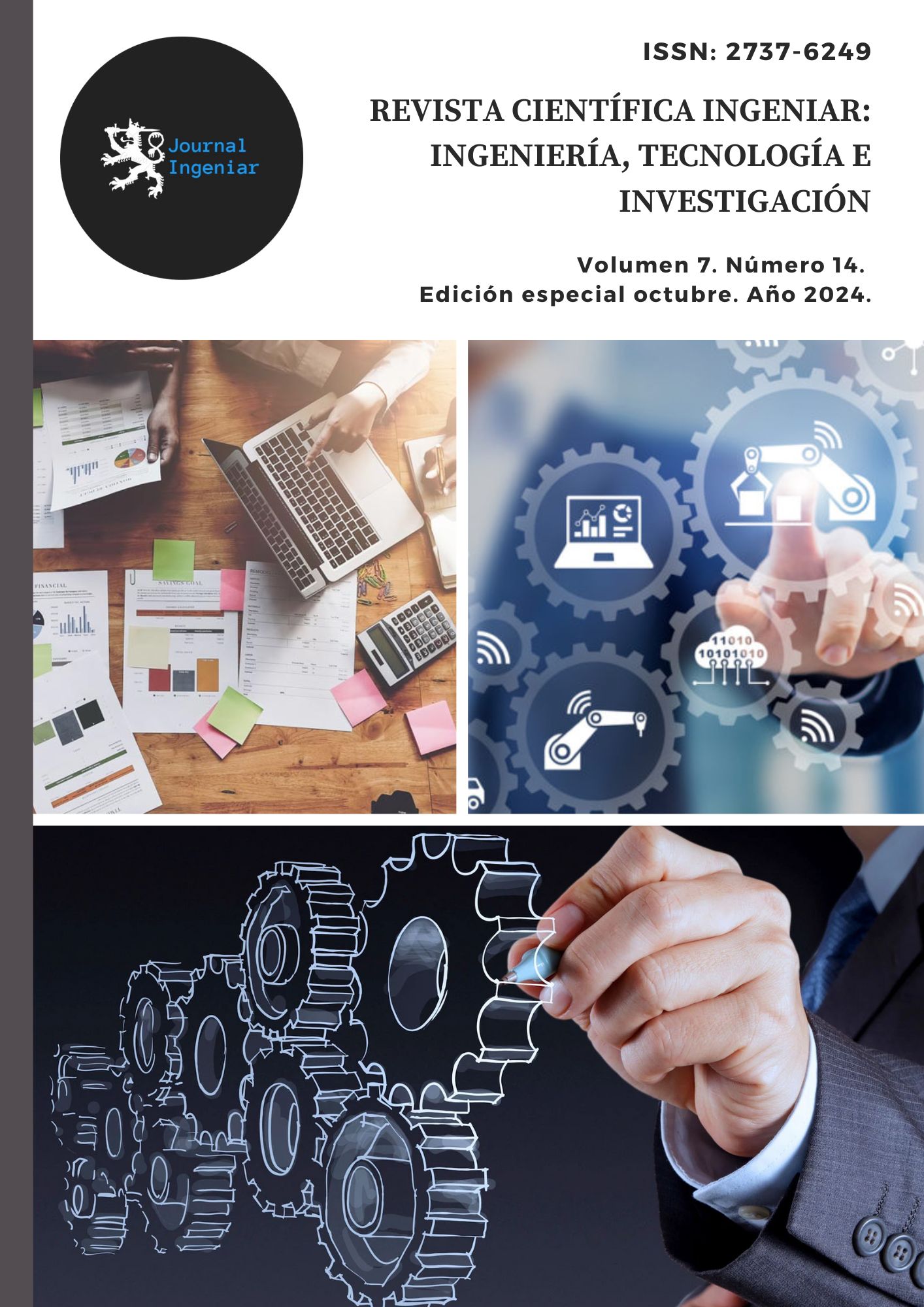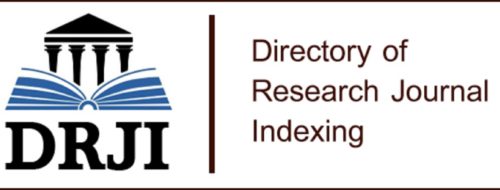TECHNICAL AND ECONOMIC EVALUATION OF THE TRANSFORMATION OF BIOGÁS INTO ELÉCTRICAL ENERGY
Keywords:
Technical evaluation of biogas in energy, economic evaluation of biogas in energy, methane in energy assessment, biogas from landfills, biogas from biodigestion processes, ecuadorian energy sovereignty through biogasAbstract
This project aims at perform a technical and economic evaluation of the transformation of biogas into electrical energy with the purpose of technically taking advantage of the biogas produced in urban landfills (UL) and biodigesters, to transform it into electrical energy and establish sovereignty and electrical diversification, and eliminate dependence on fossil fuels in Ecuador. For this, the design and construction, useful volume of biogas produced each year, useful electrical power of biogas and economic evaluation of the electrical energy generation projects in the El Inga and Ceibales UL and the biodigester project located in the Machachi city. The technical analysis shows that in 2021 the El Inga project reached the maximum annual volume of biogas with a value of 3,405 m3/h and an annual electrical power of 7,24 MW; while in 2031 the Ceibales project will reach the maximum annual volume of biogas with 1240,15 m3/h and an annual electrical power of 2,94 MW; On the other hand, the implementation of the Machachi city project would have a constant annual volume of biogas of 312 m3/h and an annual electrical power of 1 MW; In turn, the three projects reach an electrical power of 1 MW with annual biogas volume flows of 547,04 m3/h, 435,81 m3/h and 312 m3/h, with a standard deviation of 117,58 m3/h and a coefficient of variation of 27%. The economic analysis shows that the projects: El Inga with a current power (CP) of 5 MW its NPV is 11301391,77 USD being greater than zero and its IRR is 21% greater than its discount rate (DR) of 8,5%; Ceibales with a CP of 1,8 MW its NPV is 383865,48 USD being greater than zero and its IRR is 10% greater than its DR of 8,6%; and Machachi with a CP of 1 MW its NPV is 807668 USD being greater than zero and its IRR is 21% greater than its DR of 10%; they are profitable. It is concluded that, the evaluation of the three projects offers a technically and economically viable solution in the transformation of biogas into non-conventional renewable energy; since, by transforming 12,659 million accumulated tons of urban solid waste, 6581 m3 of bovine, pig and poultry excreta, a power of 7,8 MW is currently generated with an investment of 15 million USD; which, through the application of article 413 of the constitution, where the Ecuadorian state is obliged to promote the development of renewable energies, around 5498 million USD can be invested to obtain an electrical power of 2859 MW, which corresponds to the generation of electrical energy from non-renewable sources, and thus solve the deficit of 890 MW to obtain electrical energy sovereignty in Ecuador.
Keywords: Technical evaluation of biogas in energy, economic evaluation of biogas in energy, methane in energy assessment, biogas from landfills, biogas from biodigestion processes, ecuadorian energy sovereignty through biogas.
References
AGENCIA DE REGULACIÓN Y CONTROL DE ELECTRICIDAD ARCOTEL. (2016). RESOLUCIÓN No. ARCONEL- 031/16. Ecuador: ARCOTEL.
Agencia de Regulación y Control de Energía y Recursos Naturales No Renovables (ARCERNNR). (2024a). PANORAMA ELÉCTRICO 2024. ECUADOR: ARCERNNR.
Agencia de Regulación y Control de Energía y Recursos Naturales No Renovables (ARCERNNR). (2024b). PANORAMA ELÉCTRICO 2024. ECUADOR: ARCERNNR.
Agencia de Regulación y Control de Energía y Recursos Naturales No Renovables (ARCERNNR). (2024b). PANORAMA ELÉCTRICO 2024. ECUADOR: ARCERNNR.
Bastidas Moreno, C. G. (2022). Análisis del potencial energético del estiércol de aves generada en la Granja Avícola Pujilí para la generación de energía de la empresa Incubandina ubicado en el sector de Chan cantón Pujilí provincia de Cotopaxi, 2022. Diseño de un biodigestor para la generación de biogás (Tesis de Maestría). Universidad Técnica de Cotopaxi (UTC). Latacunga.
Carrasco, J. (2015). EVALUACIÓN TÉCNICA Y ECONÓMICA DE UNA PLANTA DE BIOGÁS PARA AUTOABASTECIMIENTO ENERGÉTICO: UNA ESTRATEGIA PARA DIFERENTES CONTEXTOS (Tesis de Ingeniería). Universidad de Chile. Santiago de Chile.
Centro Nacional de Control de la Energía – CENACE. (2023). Informe Anual Operador Nacional de Electricidad- CENACE. Ecuador: CENACE.
Chacha, K. (2018). RENDIMIENTO DE PRODUCCIÓN EN EL DESARROLLO ECONÓMICO DE LAS PEQUEÑAS EMPRESAS GANADERAS DEL CANTÓN MEJÍA (Tesis de Ingeniería). ESPE. Latacunga.
Cisneros, E., & Machuca, R. (2014). Estructuración de un modelo de encadenamiento productivo para la producción y comercialización de los productos derivados de la leche en la provincia de Pichincha, cantón Mejía (Tesis de Ingeniería). Universidad Politécnica Salesiana. Quito.
Comisión Nacional de Energía & la Deutsche Gesellschaft für Technische Zusammenarbeit (GTZ) GmbH. (2007). Proyectos de biomasa Guía para la evaluación ambiental energías renovables no convencionales. Santiago de Chile: ByB Impresores.
CONSEJO NACIONAL DE ELECTRICIDAD. (2011). REGULACIÓN No. CONELEC – 004/11. Ecuador: CONELEC.
Crisanto, L. (2013). ESTUDIO DE FACTIBILIDAD PARA IMPLEMENTAR UNA CENTRAL ELÉCTRICA APROVECHANDO EL BIOGÁS GENERADO POR EL RELLENO SANITARIO DEL INGA (Tesis de Ingeniería). Universidad Politécnica Salesiana. Quito.
Cruz, F. (2023, ene.11). Machala necesita un nuevo relleno sanitario a corto plazo. Diario correo. Recuperado de https://diariocorreo.com.ec/79676/ciudad/machala-necesita-un-nuevo-relleno-sanitario-a-corto-plazo
Empresa Pública Metropolitana de Gestión Integral de Residuos Sólidos EMGIRS-EP. (2024). INFORME DE CARACTERIZACIÓN DE RESIDUOS SÓLIDOS EN SITIOS DE DESCARGA DEL DISTRITO METROPOLITANO DE QUITO. Quito: EMGIRS-EP.
Empresa Pública Metropolitana de Gestión Integral de Residuos Sólidos EMGIRS-EP. (2023). Respuesta a solicitud de información - gas metano relleno sanitario del Inga Oficio Nro. EMGIRS-EP-GGE-2023-0496-O. Quito: EMGIRS-EP.
INEC. (2003). Estadística de Información Ambiental Económica en Gobiernos Autónomos Descentralizados Municipales Gestión de Residuos Sólidos 2022. Quito: INEC.
INEC. (2021). Encuesta de Producción Agropecuaria Continua (archivo Excel 2021). Quito: INEC. Recuperado de https://www.ecuadorencifras.gob.ec/encuesta-de-produccion-agropecuaria-continua/
Mariscal, G. (2007). TECNOLOGÍAS DISPONIBLES PARA REDUCIR EL POTENCIAL CONTAMINANTE DE LAS EXCRETAS DE GRANJAS PORCÍCOLAS, TRATAMIENTO EXCRETAS CERDOS. (1-9). Argentina: CENID Fisiología.
Matamoros, E. (2007). Estudio de Impacto Ambiental “RELLENO SANITARIO DE LA CIUDAD DE MACHALA”. Machala: Municipio de Machala.
Morocho, M. (2012). Alternativas de Manejo para Reducir el Impacto Contaminante de las Excretas Bovinas en los Establos Lecheros (Tesis de Ingeniería). ESPOCH. Riobamba.
Municipio del Distrito Metropolitano de Quito MDMQ. (2022). PLAN DE GESTIÓN INTEGRAL MUNICIPAL DE RESIDUOS Y DESECHOS SÓLIDOS NO PELIGROSOS Y DESECHOS SANITARIOS DEL DISTRITO METROPOLITANO DE QUITO (2022-2032). Quito: MDMQ.
Olmedo, J., & Curillo, J. (2019). VALORACIÓN DE LA PRODUCCIÓN DE ENERGÍA ELÉCTRICA A PARTIR DEL BIOGÁS QUE SE GENERA EN EL RELLENO SANITARIO CEIBALES DE LA CIUDAD DE MACHALA (Tesis de Ingeniería). Universidad Politécnica Salesiana. Cuenca.
Pérez, M., & Ponce, M. (2013). VALIDACIÓN DE LA METODOLOGÍA ACM0001 PARA LA PROPUESTA DE UN PROYECTO MDL EN EL RELLENO SANITARIO DEL CANTÓN MEJÍA (Tesis de Ingeniería). Escuela Politécnica Nacional. Quito.
Pinos, J., García., Peña, L., Rendón, J., González, C., & Tristán, F. (2012). Impactos y regulaciones ambientales del estiércol generado por los sistemas ganaderos de algunos países de América. Agrociencia, 46(4), 359-370.
Sivabalan, K., Hassan, S., Ya, H., & Pasupuleti, J. (2021). A review on the characteristic of biomass and classification of bioenergy through direct combustion and gasification as an alternative power supply. In Journal of physics: conference series (Vol. 1831, No. 1, p. 012033). IOP Publishing.
Solíz, M., Durango, J., Solano, J., & Yépez, M. (2020). CARTOGRAFÍA DE LOS RESIDUOS SÓLIDOS EN ECUADOR, 2020. Quito: Universidad Andina Simón Bolívar.
Published
How to Cite
Issue
Section
License
Copyright (c) 2024 Scientific Journal INGENIAR: Engineering, Technology and Research

This work is licensed under a Creative Commons Attribution-NonCommercial-ShareAlike 4.0 International License.

















